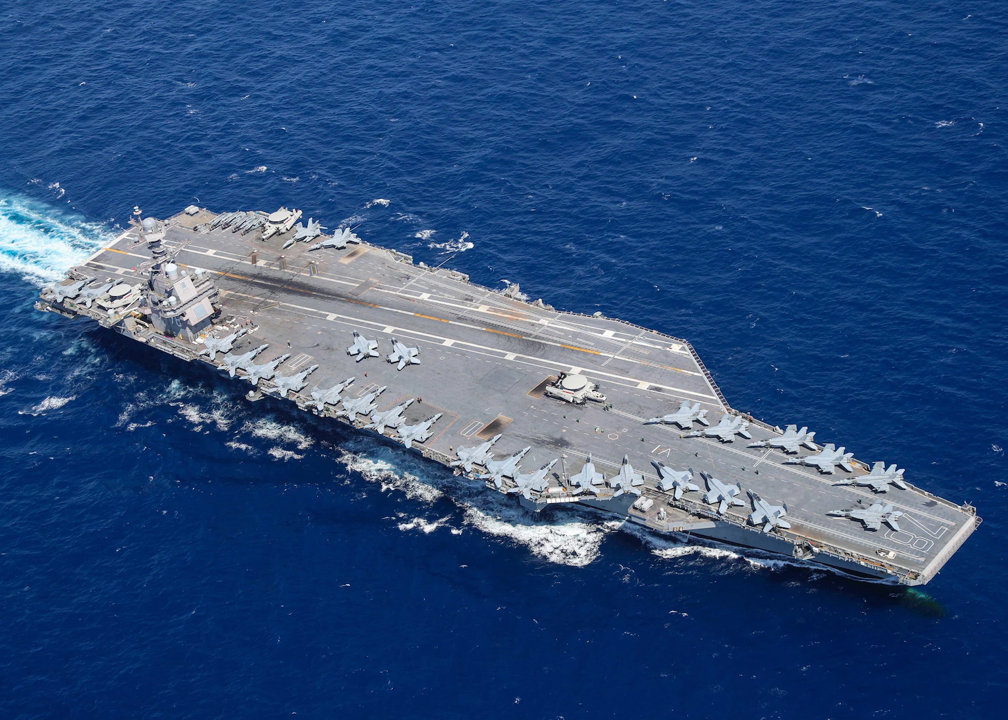Aircraft Carrier USS Gerald R. Ford On First Deployment
On 4 October, the new aircraft carrier USS Gerald R. Ford (CVN 78) departed on its first deployment from Norfolk Virginia alongside supporting vessels from its strike group. Initial plans were for the carrier to depart one day earlier but poor weather delayed the start of the voyage. The carrier strike group will travel across the Atlantic and the Mediterranean and, along with Americans, its deployment will involve personnel from eight allied nations – Canada, Denmark, Finland, France, Germany, the Netherlands, Spain and Sweden. About 9,000 personnel, 20 vessels and 60 aircraft will be involved in the deployment. The air wing assigned to the Gerald R. Ford is Carrier Air Wing 8 (CVW 8).
According to Admiral Daryl Caudle, commander, U.S. Fleet Forces Command:
“The USS Gerald R. Ford Carrier Strike Group will deploy, integrating with Allies and partners, to demonstrate its unmatched, multi-domain, full-spectrum lethality in the Atlantic […] This trans-Atlantic deployment will strengthen our relationships, capacity, and trust to forge a more peaceful and prosperous world by leveraging the ‘One Atlantic’ Command and Control Concept.”
The carrier’s first deployment will not be standard, however. First of all, it is planned to last less than the six months that are normal for carrier deployments. Second, it is a “service-retained” deployment which means that CVN 78 will remain under command of the second fleet even when the carrier enters waters assigned to other fleet commands.
The Gerald R. Ford is the first ship in its class – the first new American carrier class in almost 50 years. After the USS John F. Kennedy is commissioned in 2024, the Navy plans to commission a new Gerald R. Ford class carrier every four years. The new carriers are comparable in size to the previous Nimitz Class but require less sailors to man and have more flight deck space. Other improvements include better radar, significantly better power generation, lighter maintenance requirements, an ability to launch sorties faster, and the ability to handle a wider range of aircraft.

